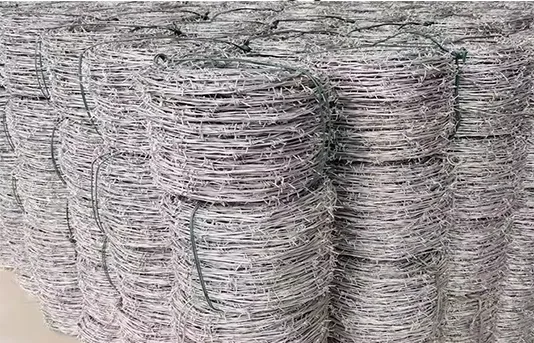-
 Phone:
Phone: -
 Email:
Email:

rock mesh retaining wall
Rock Mesh Retaining Walls An Innovative Solution for Soil Retention
In the realm of civil engineering and construction, the management of soil and slopes presents a variety of challenges. One innovative solution that has gained popularity in recent years is the rock mesh retaining wall, a structure that offers both functionality and aesthetic appeal. This article explores the concept of rock mesh retaining walls, their construction, benefits, and applications.
What are Rock Mesh Retaining Walls?
A rock mesh retaining wall is a type of retaining structure designed to hold back soil and prevent erosion. Unlike traditional concrete or masonry walls, rock mesh walls incorporate a naturally occurring element rock. This type of wall utilizes a mesh system—often made of steel or other strong materials—into which rocks or boulders are placed. The mesh acts as both a containment system and a stabilizing force, allowing the wall to harness the weight and stability of the rocks used, making it effective in managing earth pressures.
Construction Process
The construction of a rock mesh retaining wall involves several steps. Firstly, the site must be thoroughly assessed for its soil composition, slope stability, and drainage requirements. Once the site is deemed suitable, the next step is to excavate the area to create a stable base. A gravel or compacted stone layer might be added to improve drainage and enhance the wall's robustness.
The rock mesh is then erected. This can be done using pre-manufactured mesh panels that are placed along the slope or wall location. The mesh is carefully anchored and adjusted to ensure a secure fit. After the mesh framework is in place, rocks are placed within the mesh cells. The selection of rocks is critical; they should be durable, of varying sizes, and capable of interlocking to provide maximum stability. The walls are typically sloped backward at a slight angle, enhancing their load-bearing capacity.
Finally, the area behind the wall is backfilled with soil, which compacts against the rocks, adding to the overall strength of the system. Proper drainage techniques, such as weep holes or perforated pipes, are essential to prevent water buildup behind the wall, which can lead to failure.
Benefits of Rock Mesh Retaining Walls
1. Environmental Harmony One of the standout features of rock mesh retaining walls is their environmental appeal. They blend seamlessly with natural landscapes and allow for vegetation to grow in and around the structure. This not only enhances the aesthetic value but also provides additional erosion control and habitat for wildlife.
rock mesh retaining wall

2. Cost-Effectiveness Rock mesh walls are often more economical than conventional retaining walls, particularly when local rock is available for use. The reduced need for heavy machinery and extensive foundation work further lowers costs.
3. Flexibility and Adaptability These walls can be engineered to support various soil conditions and loads. Their modular design allows for easy modifications to adapt to the specific needs of a project.
4. Durability Rock mesh retaining walls can withstand extreme weather conditions, including freeze-thaw cycles, heavy rains, and seismic activities. The durability of both the mesh and the rock ensures longevity and reduced maintenance needs over the years.
5. Erosion Control With the ability to support vegetation and allow for natural drainage, these walls effectively manage surface runoff, subsequently decreasing the likelihood of soil erosion.
Applications
Rock mesh retaining walls find applications in numerous settings, including
- Road Construction They are often implemented alongside highways and roads to support slopes, preventing landslides and maintaining road integrity. - Landscaping and Architecture Many landscaping projects utilize rock mesh walls for terracing, creating visually appealing designs while managing elevation changes effectively. - Recreational Areas Parks and recreational facilities commonly incorporate these walls, balancing aesthetics with practical benefits like erosion control in picnic areas, trails, and more.
Conclusion
Rock mesh retaining walls present a sustainable, cost-effective, and aesthetically pleasing solution for soil retention challenges. Their growing popularity underscores a shift towards more ecologically responsible engineering practices. As advancements in materials and design continue to evolve, the use of rock mesh technology is poised to expand, further solidifying its role in modern civil engineering.
-
Wire Mesh for Every Need: A Practical SolutionNewsJul.25,2025
-
Steel Fences: Durable, Secure, and Stylish OptionsNewsJul.25,2025
-
Roll Top Fencing: A Smart Solution for Safety and SecurityNewsJul.25,2025
-
Cattle Farm Fencing Solutions for Maximum SecurityNewsJul.25,2025
-
Affordable Iron Binding Wire SolutionsNewsJul.25,2025
-
Affordable Galvanized Wire SolutionsNewsJul.25,2025
-
Wire Hanger Recycling IdeasNewsJul.25,2025








